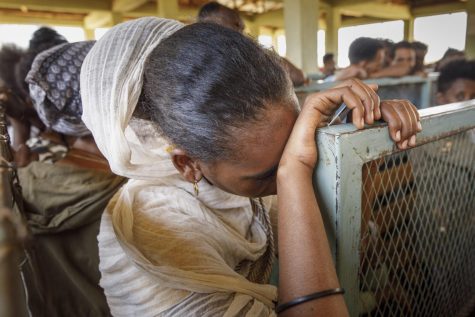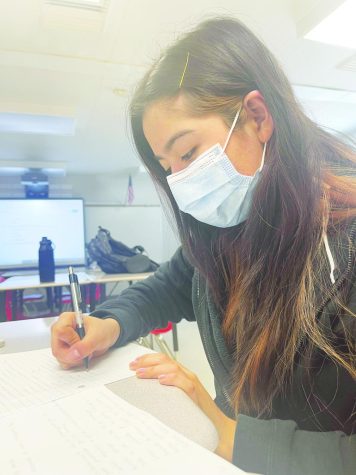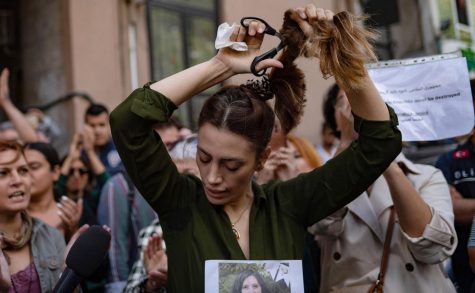Russia complicates Syrian situation
The Islamic State is not known for its prowess in the use of attack helicopters or supersonic fighters. Despite this fact, Reuters has reported that Russian officials have confirmed the presence of several SA-22 “Greyhound” air defense systems in Syria as a part of Russia’s military aid to the Assad regime. The presence of these systems – while being an eight-wheeled, boxy eyesore to the people who remain in Syria – also presents a long-term concern.
Though Western militaries involved in the fight against ISIS have not committed their own soldiers in the region, BBC reports that they have carried out airstrikes against the Islamic State for around a year. Many of these airstrikes take place in the sovereign airspace of Syria. Though the Syrian military is overextended fighting anti-Assad rebels and the Islamic State, the presence of these air defense systems is still a cause for concern. The presence of these systems does not necessarily pose an immediate threat to western air forces, as the SA-22 is classified as a “short range” air defense system (the SA-22 is quite similar to the anti-aircraft guns of WWII, with the addition of modern firing computers and the capability to fire several hundred times faster) according to Air power Australia, and Military today. The BBC has reported that these systems have thus far only been deployed in Tartus, a port city and Assad stronghold, so it is unlikely that Western air forces would be flying within range of these systems. The presence of these systems present a limited military threat. Instead, they represent a worrying development in Russia’s involvement within Syria.
At this point in time, it is clear that Russia has completed a base in Syria. Both the BBC and Reuters have confirmed that Russian troops have been deployed into Syria in large numbers, and Russian fighter squadrons are being moved into the region. The presence of troops, planes, and armored vehicles can be excused by Russia’s commitment to protecting the Assad regime. However, as Reuters as pointed out, the presence of air defense systems creates uncertainty of what Russia’s true intentions are.
The Islamic State does not have any air force to speak of. These weapon systems are essentially useless against the Islamic State, but Reuters reports that they are still being deployed by the Russian military, and are being operated by Russian crews. These systems are being deployed to defend a Russian military base that is located by a warm water port, an economic asset that Russia generally lacks.
The creation of a base in the port city of Tartus, the deployment of air defense systems, and the commitment to propping up the Assad regime all indicate that Russia is exploiting the current instability in Syria as a means to political and economic gain. The aforementioned warm water port would be a massive asset to Russian shipping, and the increased military aid to Syria is no doubt helping Russia’s defense industry. Russia has found itself in a potentially beneficial arrangement, and is unlikely to give it up.
Seizing regions through questionable means has been a running theme in Russia’s history. The recent Russian annexation of the Ukrainian-owned Crimea is just the newest development in what has been a very, very long trend. Though the West has tolerated Russia’s annexation of Crimea, building a military base located within a warm water port held by an independent nation is another matter entirely. There is no guarantee that the Assad regime will survive the Syrian conflict, and if a potential successor state wants the Russians to leave, there is a plausible risk that the Russians will refuse.
It is this possibility of refusal that makes the presence of Russian-crewed air defense systems in Syria such a cause for concern. It is an act that indicates that the Russians are willing to defend their base against a nation that actually has an air force. Since the Assad regime is in no position to be attacking the country that is essentially arming the Syrian military, it is possible that Russia is anticipating a threat from western militaries. If the West wanted Russia to leave Syria and threatened military action, Russia would have the capability to fight back. Though both the West and Russia have been careful to avoid direct military confrontation in the past, Russia’s military deployments have become increasingly brazen. In a world where the West and Russia are increasingly at odds, the risk these weapon systems pose in the long-term is worth considering.

Nicholas Mortensen is a senior at Annandale High School and is a first-year staff writer at the A-Blast. Nicholas is an IB Diploma candidate, and is a...













Freedom Machine • Oct 21, 2015 at 12:04 pm
Freedom ain’t free, y’all. We done goin’ to war with Russia. Lock an’ Load!